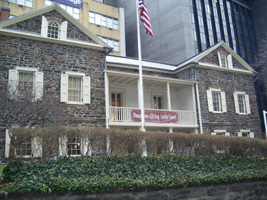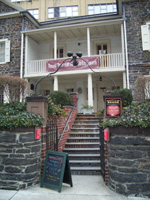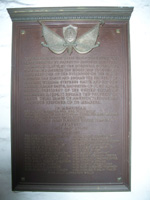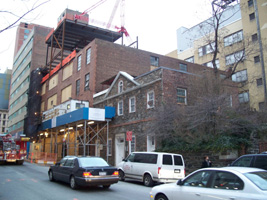Mount Vernon Hotel Museum and Garden
This building was originally built as a stone carriage house in 1799 on a 23-acre estate four miles north of what was then New York City at the southern tip of Manhattan. In 1826, the main estate house just southwest of this carriage house was destroyed by fire and the carriage house was purchased by a young entrepreneur, Joseph Hart, who converted it into a country day resort. The Mount Vernon Hotel was one of a number of day resorts in upper Manhattan that provided a verdant respite for affluent residents of the dirty, crowded city to the south.
As the city slowly moved north, the environs of the hotel became less pastoral and the building was purchased by Jeremiah Towle in 1833 for use as a family home. Industrial development from the nearby waterfront slowly surrounded the house and in 1905 Towle's daughters sold the building to the Standard Gas and Light Company (later Con Ed), whose massive gas storage tanks stood almost in the house's backyard. The gas company used the building as offices, removing many of the remaining original internal features.
In 1919, the house was leased to Jane Teller for use as an antique shop and in 1924, the Colonial Dames of America purchased the building. The building was reopened to the public as a historic house museum under the name The Abigail Adams Smith House in 1939 to coincide with the New York World's Fair that year. The house was designated a Historic Landmark by the NYC Preservation Commission in 1967, added to the National Register of Historic Places in 1973, and accredited by the American Association of Museums in 1983. The museum underwent a re-interpretation in 1988 and reopened as the Mount Vernon Hotel in 1988. It was renamed the Mount Vernon Hotel Museum & Garden in 2000 to reflect the use of the house's landscaped rear garden as a venue for events.





